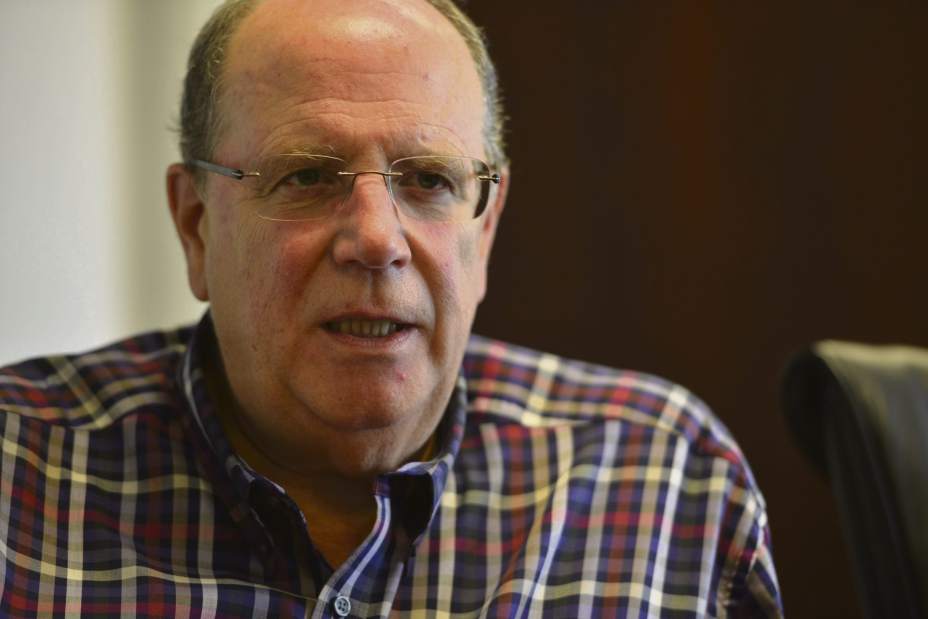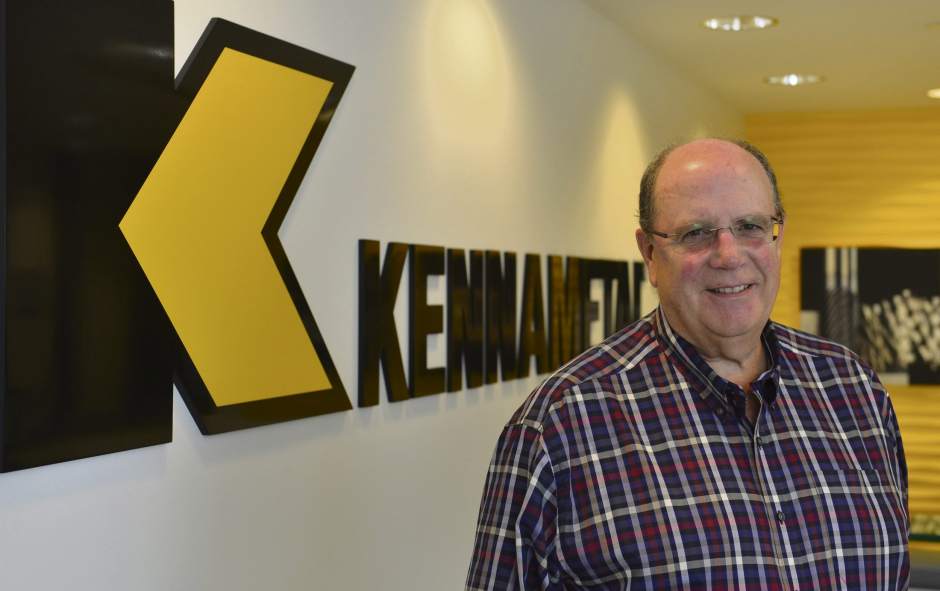Kennametal steps up efforts to streamline its operations
Kennametal Inc.'s restructuring plan to shed 1,000 jobs and save a projected $100 million, coupled with internal reorganizing and replacing outdated machinery, should better position the industrial toolmaker, its top executive said Thursday.
“The opportunity to grow the company is staring us in the face,” and it can be done through internal growth and lowering costs, Chief Executive Officer Ronald De Feo told analysts who gathered at Kennametal's corporate center in Unity for a review of operations.
De Feo, 64, who took over as president and CEO in February, has been making changes after replacing Donald Nolan, who was removed in February after only 15 months on the job as the company suffered losses. De Feo said a significant change has been made in the leadership team, and the restructuring has been both internal and external.
“My job is to change the culture” of a company with $2 billion in annual sales, a great heritage and strong brands, he said.
Over the past several years, Kennametal had become a “serial restructurer,” De Feo said. But the company hadn't fully reaped the benefits of cutting jobs and manufacturing plants. Plans didn't work out as anticipated, in part because markets are hard to predict and the company operated in “silos” — with marketing separate from sales and sales separate from manufacturing. Some acquisitions were ill-timed or not well-integrated into its core business, he noted.
“We'd leak it out the other side 'cause we weren't connected,” said De Feo, who was on Kennametal's board before becoming CEO.
The company has completed about 75 percent of its goal of cutting 1,000 jobs from a global workforce of 12,000 employees and expects to finish the process in this fiscal year, which ends June 30, he said.
The company's headquarters is in Pittsburgh, and Kennametal employs about 900 people in Westmoreland County at a technology center in Unity and manufacturing plants in Irwin and Hempfield.
“The brute force solution” of eliminating jobs will allow Kennametal to get ahead of its cost structure, De Feo said.
About 65 percent of the savings correlated to job reductions have been identified and are being implemented, he said. Company officials have said they hope to define up to $300 million in additional savings over the next two to three years by becoming more efficient.
The first wave of cost cuts, however, are “just the first down payment in front of the 2017 imbedded costs increases,” De Feo said.
Most recently, the company posted a $21.2 million net loss on sales of $477 million in the first quarter that ended Sept. 30, compared with a $6.2 million net loss a year ago on sales of $555 million. That represents a loss of 27 cents per share for the first quarter of 2017, down from a loss of 8 cents a share a year ago.
To get on the right track, the company needs to improve its manufacturing productivity, De Feo said. Kennametal can offer great metal-cutting products to its customers in energy exploration, aerospace and highway construction, but they may be too expensive, he noted.
De Feo pointed out that two competitors, Sandvik Coromant of Stockholm and ISCAR in Israel, are more modernized than Kennametal, and the company needs to catch up and try to leapfrog over them. Kennametal has equipment that, in many cases, is simply too outdated for modern manufacturing and needs to be replaced, he said.
Analyst John Tumazos of Tumazos Very Independent Research LLC of Holmdel, N.J., was optimistic about the company's future.
“I think the worst is behind them,” Tumazos said. “I think it is wonderful they can control costs and improve.”
Kennametal's key markets for its industrial tools have shown improvement recently. Oil prices have risen $20 a barrel, natural gas prices are up $1 per thousand cubic feet and prices for metallurgical coal have tripled, Tumazos noted.
“It appears that the energy and hard rock mineral markets are recovering,” he said.
Joe Napsha is a Tribune-Review staff writer. Reach him at 724-836-5252 or jnapsha@tribweb.com.


